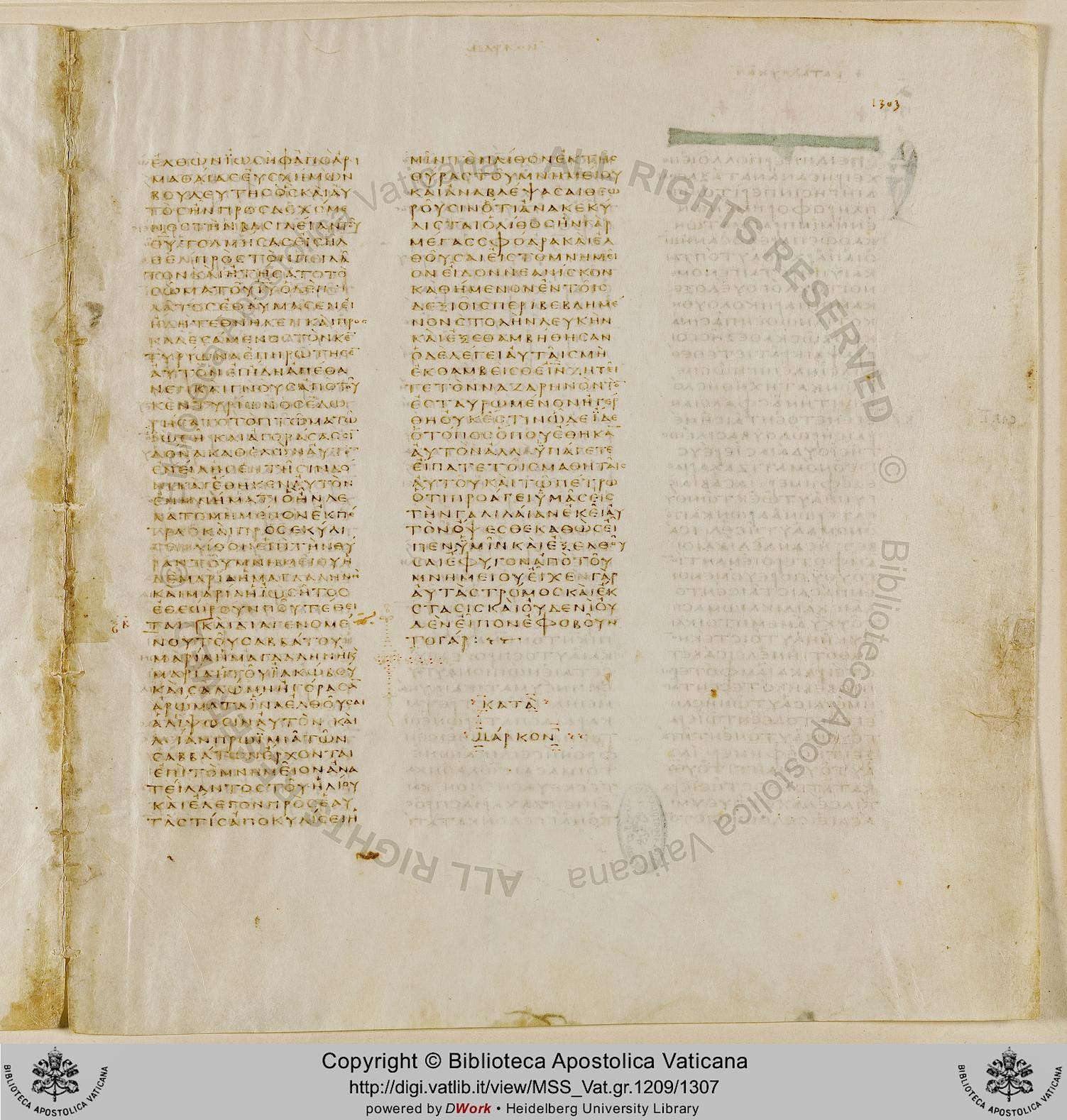I sincerely doubt that most people who post on this forum are experts. Most of us have our opinions, but most of the time they have no sound footing.
Here is the NET translator's comment on the long ending of Marks' Gospel (with my emphases)...
The Gospel of Mark ends at this point in some witnesses (א B sys sams armmss geomss Eus Eusmss Hiermss), including
two of the most respected mss (א B). This is known as the “short ending.” The following “intermediate” ending is found in some mss: “They reported briefly to those around Peter all that they had been commanded. After these things Jesus himself sent out through them, from the east to the west, the holy and imperishable preaching of eternal salvation. Amen.” This intermediate ending is usually included with the longer ending (L Ψ 083 099 579
pc); k, however, ends at this point. Most mss include the “long ending” (
vv. 9-20) immediately after
v. 8 (A C D W [which has unique material between
vv. 14 and
15] Θ ƒ13 33 M lat syc,p,h bo); however,
Eusebius (and presumably Jerome) knew of almost no Greek mss that had this ending. Several mss have marginal comments noting that earlier Greek mss lacked the verses.
Internal evidence strongly suggests the secondary nature of both the intermediate and the long endings. Their vocabulary, syntax, and style are decidedly non-Markan (for further details, see
TCGNT 102-6). A
ll of this evidence indicates that as time went on scribes added the longer ending, either for the richness of its material or because of the abruptness of the ending at
v. 8. (Indeed, the strange variety of dissimilar endings attests to the likelihood that early scribes had a copy of Mark that ended at
v. 8, and they filled out the text with what seemed to be an appropriate conclusion. All of the witnesses for alternative endings to
vv. 9-20 thus indirectly confirm the Gospel as ending at
v. 8.) Because of such problems regarding the authenticity of these alternative endings,
16:8 is usually regarded today as the last verse of the Gospel of Mark. There are three possible explanations for Mark ending at
16:8: (1) The author intentionally ended the Gospel here in an open-ended fashion; (2) the Gospel was never finished; or (3) the last leaf of the ms was lost prior to copying. This first explanation is the most likely due to several factors, including (a) the probability that the Gospel was originally written on a scroll rather than a codex (only on a codex would the last leaf get lost prior to copying); (b) the unlikelihood of the ms not being completed; and (c) the literary power of ending the Gospel so abruptly that the readers are now drawn into the story itself. E. Best aptly states, “It is in keeping with other parts of his Gospel that Mark should not give an explicit account of a conclusion where this is already well known to his readers” (
Mark, 73; note also his discussion of the ending of this Gospel on 132 and elsewhere). The readers must now ask themselves, “What will I do with Jesus? If I do not accept him in his suffering, I will not see him in his glory.” For further discussion and viewpoints, see
Perspectives on the Ending of Mark: Four Views, ed. D. A. Black (Nashville: B&H Academic, 2008); Nicholas P. Lunn,
The Original Ending of Mark: A New Case for the Authenticity of Mark 16:9-20 (London: Pickwick, 2014); Gregory P. Sapaugh, “An Appraisal of the Intrinsic Probability of the Longer Endings of the Gospel of Mark” (Ph.D. diss., Dallas Theological Seminary, 2012).sn
Double brackets have been placed around this passage to indicate that most likely it was not part of the original text of the Gospel of Mark. In spite of this, the passage has an important role in the history of the transmission of the text, so it has been included in the translation.
If some disagree with the experts, please answer precisely why.

